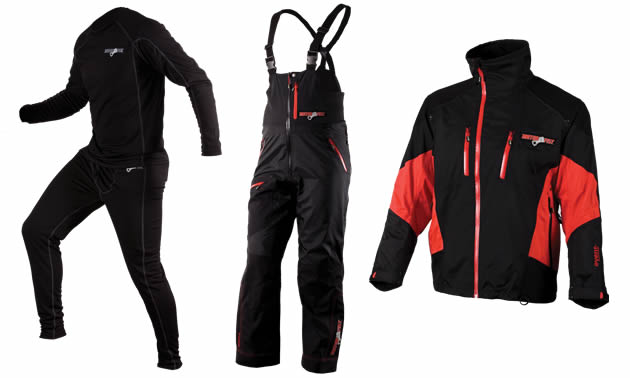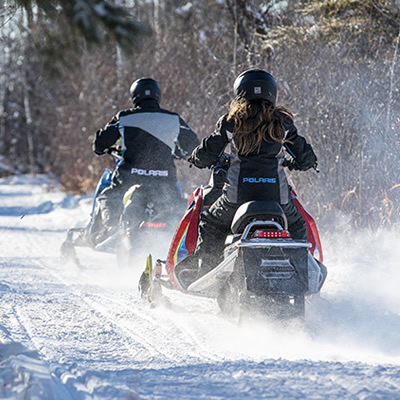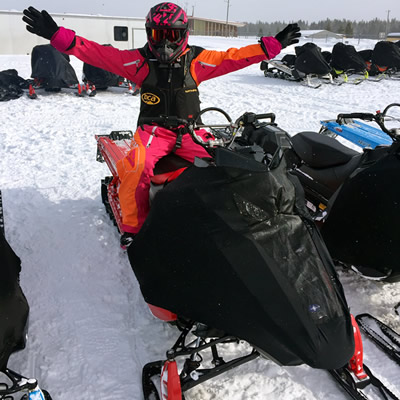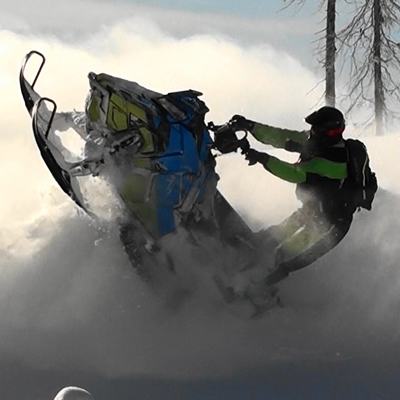Dressing appropriately when sledding is one of the most important keys to staying warm and dry. The clothing of today is nothing like the bulky onesies with the felt-lined hoods of yesteryear. I still have one of those Oompa-Loompa Ski-Doo suits I found at a second-hand store. It had a little clip belt, fuzzy hat and absolutely no waterproofness whatsoever.
People who do not know any better think that more is more when it comes to their winter wear but this is absolutely not the case. Visions of the big bulky, down-filled parka is what many equate to warm winter wear. This would actually be a detriment to most snowmobilers. Your body would overheat, causing you to sweat and that sweat would then soak your gear—which would act like a sponge.
So what makes functional gear for the average mountain sledder?
1. Outer layer
Your outer layer should be waterproof, windproof and dry. This is imperative. Good choices for an outer layer are those with E-Vent (Motorfist), or Gortex (Klim). Armpit venting and other vents are also key to keeping warm and dry. Wrist gators are also a great idea to keep the wind out. Higher-end jackets will have this feature.
2. Mid-layer
Your mid-layer determines the level of warmth you will be generating. There are many fabrics that should never be used as a mid-layer and cotton is one of them. For those of you who insist upon using a cotton hoodie as your mid-layer, stop it. When I teach winter survival in schools we have a saying—cotton kills. It means that cotton will soak up your sweat like a sponge and hold it right next to your body. Enter the next step—hypothermia.
For your mid-layer, choose fabrics like fleece. Fleece will come in a variety of weights—from a hydrophobic-type fleece, which is light and sleek, to the thicker 400-gram-plus type of fleece, designed for very cold temperatures. Fleece is not only a great insulator, it also provides moisture-wicking properties designed to take sweat away from your skin.
3. Base layer
Your base layer, which is next to your skin, provides moisture-wicking properties as well as quick-drying properties. Another unique feature of the higher-end base layers is the anti-microbial types of fabric used. Translated: you won’t get stinky.
When you are choosing your socks, bulk isn’t always better. The tighter your boot, the less circulation you will have, so you will, in fact, get colder. Choose a good moisture-wicking sock which, again, will keep you dry resulting in added warmth.
The functionality of today’s snowmobile clothing was simply unheard of a decade ago. Your gear will be the difference between a happy ride, and a ride from hell. People riding in extremely frigid temperatures, or those who trail ride would most likely be too cold to dress in layers as illustrated above. The thicker, insulated gear is what is normally sought out by flatland riders and trail riders. Understand how the gear works, and dress for your climate and ride style.







